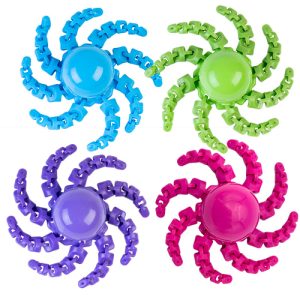A sensory room is a safe and engaging environment to provide a soothing and relaxing atmosphere for individuals of all ages who struggle with sensory processing. Further, sensory rooms can help those with sensory disorders regulate their sensory input and cope with anxiety, tension, and other sensory-related issues. If you are wondering how to design a safe and practical sensory room, here are a few tips and ideas.
Tips & Ideas To Build A Sensory Room
A few tips and ideas for building a sensory room are as follows:
1. Choose a Safe and Stimulating Space:
The ideal location for a sensory room is a safe and stimulating space, such as a quiet room or a space with minimal distractions. It should be a room that is easily accessible and can be secured when not in use. Additionally, consider the lighting, temperature, and acoustics of the room.
2. Select Sensory Equipment and Materials:
Sensory equipment and materials can provide a range of sensory experiences, including tactile, visual, auditory, and olfactory stimulation. Further, be sure to choose materials that are safe and appropriate for the child’s age and developmental level.
3. Pay attention to safety:
Safety should be a top priority when creating a sensory room. Choose equipment that is designed for safety and ensure that the space is free of hazards.
4. Create a calming atmosphere:
A sensory room should be a calming and relaxing space. Consider using calming colours and incorporating natural elements, such as plants and water features, to create a peaceful atmosphere.
5. Incorporate music and sound:
Music and sound can be effective ways to create a stimulating environment in a sensory room. Consider using a variety of music and sound sources, such as calming nature sounds, classical music, or white noise.
6. Provide opportunities for movement:
Movement can be an important component of sensory rooms. Consider incorporating swings, balance boards, and other equipment that encourages movement and provides a sensory experience.
7. Incorporate Play and Learning:
A sensory room can also be used as a space for play and learning. Consider adding educational materials such as books, puzzles, and sensory toys. You may also want to incorporate therapeutic activities such as yoga or meditation.
8. Involve the Child and Family:
It is important to involve the child and their family in the process of creating a sensory room. Ask the child what they would like to see in the room and what sensory experiences they enjoy. Encourage the family to participate in the design process and to provide feedback on the effectiveness of the room.
Conclusion
A sensory room can provide a safe and stimulating space for children with autism to regulate their sensory system and improve their overall well-being. Sister Sensory offers a range of quality sensory equipment, toys, educational kits, and more. Visit our website to explore our range of offerings.







